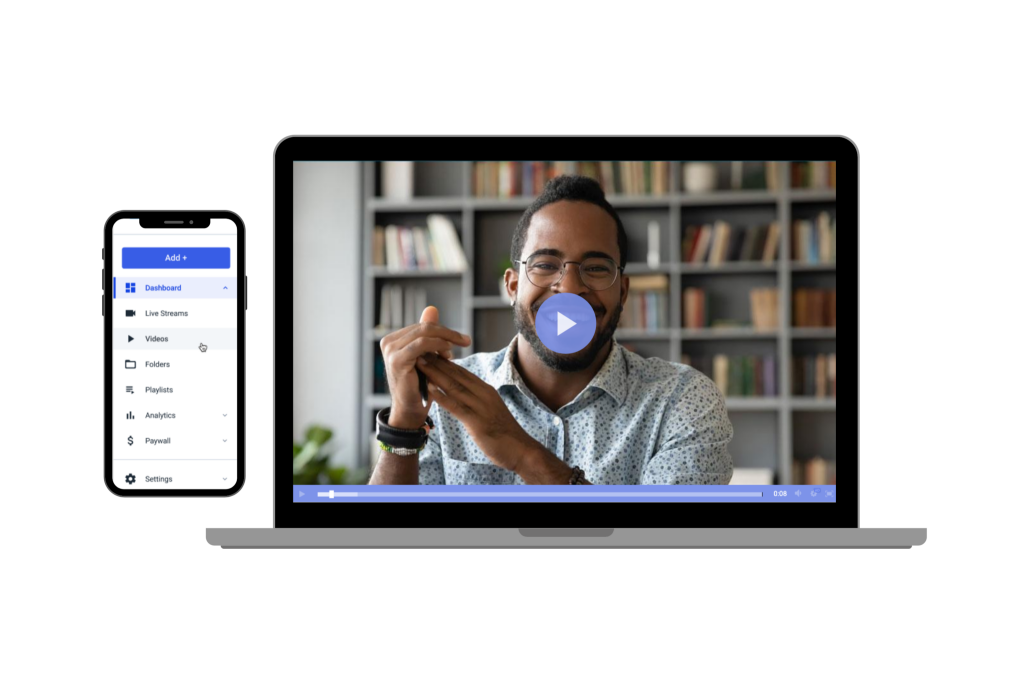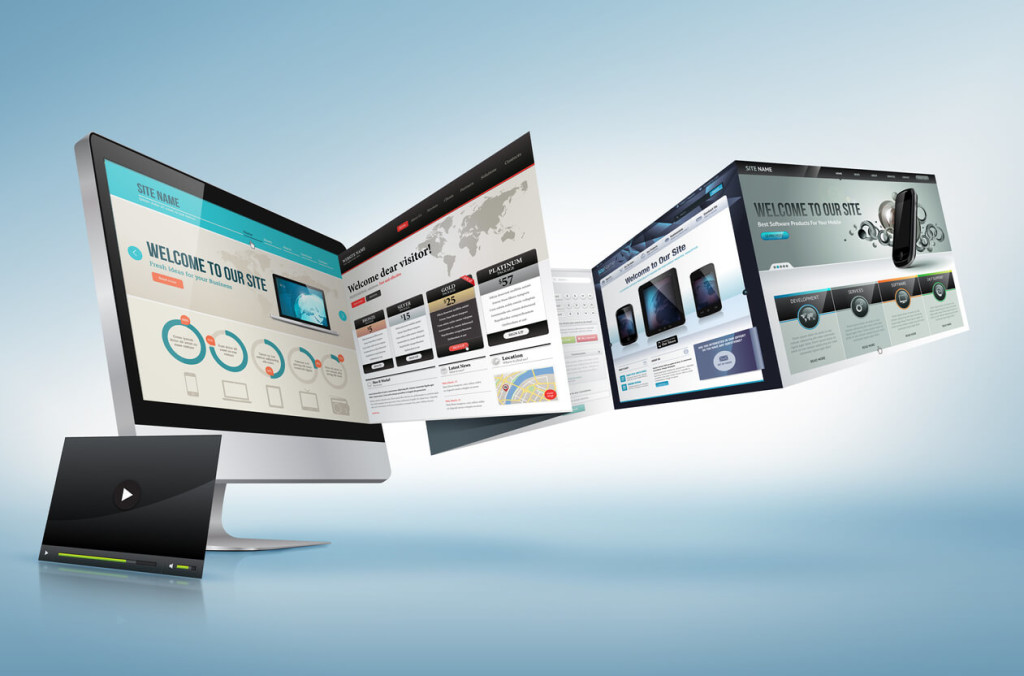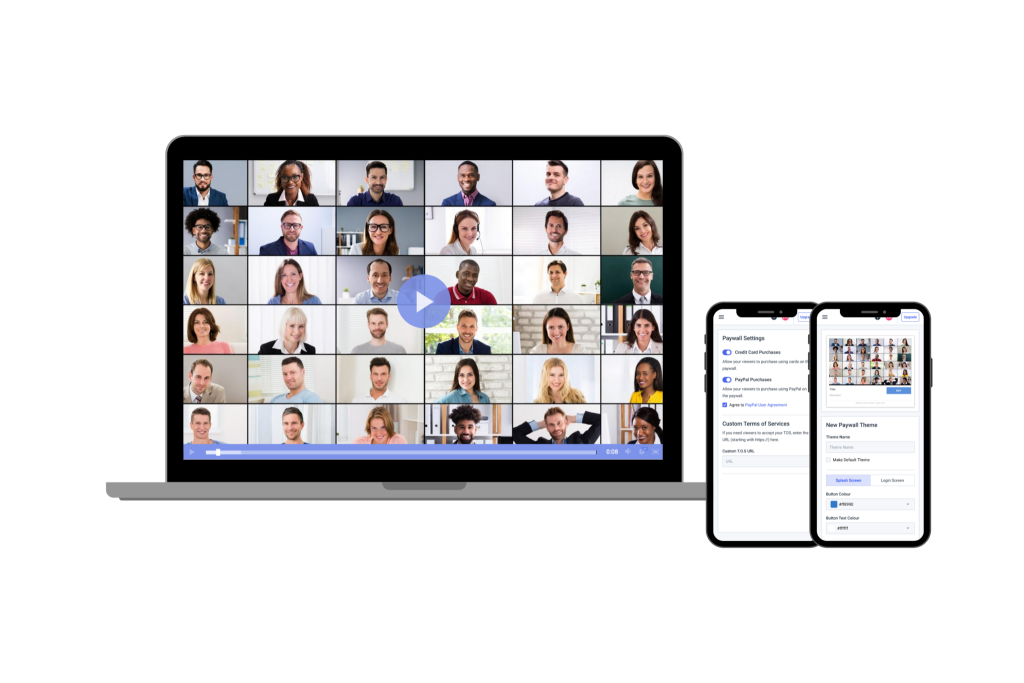The Ultimate Guide to Creating a Video Training Platform in 2025
In 2025, video training platforms are essential for modern businesses. With hybrid teams and remote work now standard, companies are rethinking how they train employees and onboard new hires. LinkedIn’s 2024 Workplace Learning Report found that 94% of L&D leaders say video is vital in today’s workplace.
Whether you’re building a remote workforce training platform or improving employee onboarding, the right video training solution helps save time, reduce costs, and boost learning outcomes. From secure internal video streaming to mobile training delivery and built-in analytics, today’s tools make it easier than ever to scale professional learning programs.
In this guide, we’ll walk you through how to build a video training platform for employees, from creating engaging content to choosing the best corporate LMS with video hosting. You’ll discover tools for professional onboarding video creation, multilingual course delivery, interactive features, and top platforms like Dacast that support branded training portals and enterprise learning needs.
Table of Contents
- Who Benefits from a Video Training Platform?
- 2025 Video Training Trends to Know
- Monetizing Internal Knowledge
- What Makes a Good Training Video?
- How to Create a Video Training Platform
- Top Hosting Solutions for Training Video Delivery in 2025
- Analytics and Feedback Loops
- Compliance and Security Considerations
- FAQs
- Conclusion
Who Benefits from a Video Training Platform?
Why Use Online Training Videos?

A professional-grade video training platform offers real business advantages, especially as more companies train employees remotely or across regions. Here’s what makes them so valuable:
- Save time and reduce costs: Instead of paying another team member to train each new hire, pre-recorded training videos can automate the entire onboarding process. This cuts down on manual hours and helps scale your operations without increasing overhead.
- Deliver consistent training at scale: Every employee receives the same accurate, high-quality information—no missed steps or miscommunication—regardless of department or location.
- Train a global workforce with ease: A scalable video training platform supports multilingual learning programs and regional customization, making it easier to roll out training worldwide.
- Improve knowledge retention: Studies show that video-based learning helps people retain information better than reading manuals or attending one-time sessions.
- Track progress and performance: With built-in analytics and quiz features, you can monitor engagement, test comprehension, and identify gaps in your training content.
- Support mobile and remote learning: A modern mobile training video delivery system ensures employees can learn anywhere, anytime—ideal for hybrid teams and distributed workforces.
- Secure and branded video access: Platforms like Dacast offer secure internal video streaming and branded training portals so only authorized employees access your content.
- Stay agile with on-demand updates: Easily update or replace outdated content without re-running in-person sessions, keeping your team aligned with the latest policies or systems.
By choosing a platform that includes corporate LMS video integration, interactive features, and enterprise-level video hosting, businesses can launch a truly effective video training platform in 2025.
Who Should Create a Video Platform?
Any business that invests time and money into training new employees could benefit from creating a business-grade training platform. Larger businesses with more employees will likely see a larger return on investment, but creating standardized training videos is useful for small and medium-sized businesses as well.
Training video software platforms are especially useful for brands with many branches or corporations that sell franchises. Giving everybody access to the same training materials helps to maintain consistent brand standards.
When everybody is using identical training materials, everybody learns the same thing from the same source. This is particularly useful in the food and service industry.
For example, if you have an ice cream chain, everybody knows that banana splits have three scoops of ice cream, one banana, and two cherries. That way, customers can go to different locations of the same chain on opposite sides of the country and rest assured that they will get the same dessert made the same way.
Here are some real-world examples:
- Healthcare providers
Deliver up-to-date online training courses for staff certifications, patient safety, and equipment usage with secure internal video streaming. - Field sales teams
Use mobile training video delivery to keep sales reps aligned with product updates, pitch training, and compliance—even on the go. - Retail companies
Train employees at scale across locations with a branded training video portal and employee onboarding automation with video. - Franchise businesses
Create multilingual corporate video courses and standardize operations across franchises using a video training platform with analytics and quizzes. - Remote-first teams
Use a remote workforce training platform to host onboarding videos securely, support continuous learning, and track engagement.
If you’re wondering how to build a video training platform for employees, the answer depends on your needs, but scalable, secure tools like Dacast can help you launch faster. Whether you’re creating onboarding video content or looking for a corporate LMS video integration, the right solution makes it easy to train employees from anywhere.
2025 Video Training Trends to Know
The world of online learning is evolving fast, and 2025 brings some exciting trends to video training platforms. AI-generated training modules are becoming popular, automatically creating tailored content to speed up course creation.
Personalized learning paths help employees focus on skills they need most, boosting engagement and retention. Mobile-first content delivery ensures training videos work smoothly on any device, supporting learning anytime, anywhere. Finally, immersive training through XR and VR is gaining traction, letting learners practice skills in a realistic virtual environment.
Monetizing Internal Knowledge
More enterprises are finding ways to turn employee training into a revenue source. By offering paid training programs to partners or customers, companies can extend the value of their internal knowledge.
Corporate training video hosting platforms make it easy to create and sell professional courses while maintaining secure access. This approach not only drives new income but also strengthens relationships with clients and partners through valuable educational content.
What Makes a Good Training Video?

Creating great training videos is about more than just filming—it’s about delivering content that’s clear, useful, and engaging. Whether you’re building a full-scale video training platform in 2025 or uploading onboarding materials to a corporate training video hosting solution, here are the essentials that make your videos effective.
1. Start with Clear Objectives

Every training video should begin with a purpose. Objectives help learners understand why the training matters, not just what they’re supposed to learn. For example, instead of saying “Learn to greet customers,” try “Learn how to greet customers using brand-specific language to increase sales.” This approach keeps learners engaged and helps your team build a more intentional training flow.
2. Use a Script That Makes Sense
A concise, well-organized script is the backbone of any effective training video. While visuals add value, your script delivers the core message. Outline your key points, then shape them into simple, clear language that’s easy to follow. This is especially important if you plan to use AI voiceovers or avatar presenters, which rely heavily on clean, structured input.
3. Invest in Good Video and Audio
Poor quality can distract from your message. To present your company professionally, use proper lighting, clear audio, and high-resolution visuals. Even simple improvements to your setup can help your training content feel more credible. For tools, refer to our guide on the best tools for creating professional employee training videos.
4. Make Access Simple
Your training content should be secure, but not hard to reach. On a reliable employee training video platform, make sure team members can log in easily, navigate modules, and pick up where they left off. Whether it’s video onboarding or continuous employee training, ease of access reduces friction and improves completion rates.
2025 Best Practices
As video onboarding platforms evolve, expectations for interactivity, accessibility, and performance are higher than ever. Here are four must-haves for professional video training in 2025:
- Interactive elements: Use branching decision trees, in-video quizzes, and clickable options to turn passive watching into active learning. These features are now standard in many interactive video training tools for businesses.
- Mobile optimization: A growing share of online learning now happens on phones. Choose a platform that supports responsive video design and seamless mobile learning.
- WCAG compliance: Accessibility is no longer optional. Ensure your videos meet WCAG standards with captions, transcripts, and screen reader compatibility—especially if your company serves a diverse or global workforce.
- AI-generated voiceovers and avatars: Accelerate production and reduce costs by integrating AI-powered narration or on-screen avatars. These tools are becoming standard in enterprise video LMS solutions and corporate video hosting platforms.
How to Create a Video Training Platform

Video Creation Workflow
Video training platform is not complicated, but it does take a great deal of planning, preparation, and execution. Luckily, you’ll probably have to create the entire platform only once and then swap out small video clips as changes are updated in your processes and procedures.
1. Plan Your Content
To make sure everything is covered in a way that makes sense to your new team members, you will want to outline every aspect of the training program that you’re going to launch.
Organize it in a sequence that makes sense. Your content should be “stackable” in the sense that information in video #1 prepares viewers for what they’re going to learn in video #2.
At this point, you can also decide how your training videos will be broken up. Some companies use a series of 2 to 5-minute videos in each module just to keep the viewer attentive. Others want to knock it all out at once and create one long video.
Figure out what works best for the type of employees you’re training and the materials you’re teaching them about.
2. Write Your Scripts
Writing scripts for your videos is very, very important. To get started, you’re going to take the outlines you created in your previous step and break them into smaller outlines for individual videos.
Once you’ve decided which content will be in each video, fill in additional information as subcategories until you have all of the pertinent information down on paper. At this stage, you’ll have to decide how to present the information so that you can craft the script accordingly.
Ask yourself:
- Will there be on-screen dialogue or will one person be rattling off information to the camera?
- Will there be diagrams and other visuals with voiceovers?
There is no right or wrong way to go about this, but you have to do what makes the most sense for the specific materials you’re sharing.
It may be wise to call on a writer who is well-versed in scriptwriting so that you don’t have to learn the technicalities of the craft. As long as you provide the information that needs to be conveyed, hiring a professional will make this process more straightforward.
If you decide to write your scripts, we have a few pointers for you. The first thing to keep in mind is that the script should be conversational. The viewers should feel like they are part of a conversation rather than being lectured.
Don’t use technical jargon unless you plan on thoroughly explaining it. The purpose here is for the viewers to learn, so you don’t want to make it too difficult for them to understand.
Lastly, don’t get frustrated if your words don’t feel like they’re enough. Your script will be brought to life by visuals and actors, so it’s okay if certain phrases or lines lean mostly on that supplementary support.
3. Create Your Videos
Once your scripts are in place, it is time to produce your videos. This step involves filming and editing your video footage. If you don’t have an in-house team that is skilled in video production, it is a good idea to hire one so that your result is presentable and professional.
Your video content is the foundation of your training platform. This step is where you bring your expertise to life through engaging, well-structured videos that support your learning goals. Whether you’re onboarding new employees or running ongoing corporate training, clear and polished videos make a big difference.
Recommended tools for creating professional employee training videos:
- Descript – Ideal for scripting, editing, and repurposing content with ease.
- Synthesia or HeyGen – AI video generators for quick, scalable training content using avatars and text-to-speech.
- Camtasia – A user-friendly tool for screen recording and instructional content.
- OBS Studio – Great for recording live demos, tutorials, or walkthroughs.
Tips for accessibility and inclusion:
- Add captions or subtitles to all training videos.
- Use clear fonts and high-contrast visuals for readability.
- Make sure your video player supports screen readers and keyboard navigation.
- Offer downloadable transcripts for learners who prefer reading.
These small adjustments help you reach a wider audience and meet compliance needs while improving the overall learner experience. As of 2025, most enterprise learning video tools support mobile learning, interactive elements, and video onboarding platform features, so be sure to plan your content accordingly.
Building & Launching the Platform
4. Build Your Website

Next, you’re going to need to build a live streaming website where your video players will live. You should create a site that is easy to navigate, works on both desktop and mobile, and looks professional.
The site can be basic because it should be dedicated solely to training new employees. There is no need to worry about the sales marketing elements that you’d put into your regular business site, like calls to action, email captures, SEO elements, etc.
This step is unnecessary if you’re using a platform like Dacast that offers custom-branded video galleries as one of its features. Our Expo video portals make it easy to create playlists of videos that your teammates can access in just a few clicks. You can even add password protection so that no unauthorized viewers gain access.
Once your videos are ready, the next step is to deliver them in a secure, organized, and easy-to-use platform. Traditionally, this means building a training website. But in 2025, businesses have more flexible and scalable options to host onboarding videos securely and manage training content.
Options for hosting and delivery:
- Create a custom-branded website using a white-label video hosting platform like Dacast, which offers full control, privacy, and custom portals.
- Use a secure LMS (Learning Management System) or LXP (Learning Experience Platform) such as TalentLMS, Docebo, or Absorb, especially if you want built-in tracking, assessments, and learner dashboards.
Integrate with your workflow:
- Connect your video training platform to HRIS tools or onboarding systems for a seamless experience from hiring to training.
- Use corporate video LMS solutions that support single sign-on, user segmentation, and analytics for HR and L&D teams.
No matter which approach you choose, your platform should support interactive video training tools for businesses, mobile learning, and high-quality corporate training video hosting. Look for solutions that allow you to create courses, manage users, track engagement, and scale as your team grows.
5. Choose an Online Video Platform
You will need an online video platform (OVP) to host your video content. This is not the viewer-facing gallery that presents your videos. It is the platform that stores the video files behind the scenes.
There are a few things to look for in an OVP when creating an online training platform:
- Security (specifically password protection and domain restrictions)
- Bulk upload
- Easy embedding
- Video portal/video gallery
- Ample data
- Video-on-demand (VOD) capabilities
Live video hosting is a plus, especially if you plan on it. However, VOD hosting is an absolute must.
6. Upload & Embed Your Videos

Once you’ve invested in an online video platform, it is time to upload your videos. As we mentioned, choosing an OVP with bulk upload capabilities is the way to go because it will save you time and hassle.
After you upload your videos, you should organize them in playlists according to the order you’d like them to play. You can also group them into modules. This is important for the next step.
Embedding your videos on your new video training platform is usually as simple as copying and pasting a snippet of code from your online video platform.
You’ll have to choose which embed code you’ll use, JS or iFrame. We urge you to check out our post dedicated to helping you decide which embed code to use.
Top Hosting Solutions for Training Video Delivery in 2025

To build a successful video training platform in 2025, you need more than basic video storage. A modern employee training video platform should support secure delivery, live and on-demand streaming, interactivity, analytics, and LMS integration.
Whether you’re delivering onboarding, compliance modules, or ongoing employee training, choosing the right corporate training video hosting platform is key. Below is a comparison of four leading solutions in 2025:
Comparison Table: Corporate Video LMS Solutions for 2025
| Feature / Platform | Dacast | Panopto | Kaltura | Vimeo Enterprise |
|---|---|---|---|---|
| AI Tools | Auto-captioning, smart playlists | Smart search (speech indexing) | In-video quizzes, facial recognition | Basic auto-captioning |
| VOD/Live Support | Secure VOD + live | Internal live + VOD | Interactive live + VOD | Webinar tools + VOD |
| Analytics & Tracking | Real-time, viewer-level stats | LMS-grade analytics | Engagement heatmaps | Engagement dashboards |
| Privacy/Security | Passwords, geo-blocking, AES encryption | SSO, IP restriction | DRM, role-based access | Domain-level controls |
| LMS Integration | API, SSO, Zapier | Moodle, Blackboard | SCORM, LMS-ready | Limited LMS options |
| Interactive Features | Expo portal, chapters, CTAs | Quizzes, notes | Quizzes, polls | Q&A, live chat |
| Best For | SMEs, OTT-based employee training | Academic and internal teams | Enterprise-grade interactive video training tools | Branded marketing and onboarding |
Why Dacast Is Built for Corporate Training in 2025
While each platform serves different needs, Dacast stands out by offering a full corporate video LMS solution tailored for training and onboarding. It combines secure video hosting, white-label branding, and interactive features in one simple platform.
With Expo portals, you can create branded training hubs—no developers required. Dacast also supports mobile learning, adaptive streaming, and bulk content upload, making it ideal for growing teams.
Whether you’re launching remote onboarding, compliance training, or internal communications, Dacast offers the tools to create courses, track engagement, and scale your video onboarding platform securely.
Analytics and Feedback Loops
Tracking learner progress is key to improving any employee training video platform. Modern enterprise learning video tools provide detailed analytics like heatmaps and quiz scores, showing exactly how users interact with content. These insights help trainers spot what works and what doesn’t. Combined with regular employee feedback, this data creates a continuous improvement cycle that keeps training fresh, relevant, and effective.
Compliance and Security Considerations
When creating a corporate video LMS solution, security and compliance must come first. Regulations like HIPAA, GDPR, and SOC 2 set strict rules on how employee data and training content are handled. Using secure delivery methods such as tokenized access, digital rights management (DRM), and geo-blocking helps protect videos from unauthorized viewing. This ensures your onboarding videos and other sensitive training materials are hosted securely, meeting legal requirements and building trust.
FAQs
What tools do I need to build a training platform in 2025?
You’ll need video hosting platforms with secure streaming, interactive video training tools for businesses, AI-powered content creators, and analytics software to track learner progress.
Is it better to use an LMS or a video platform?
Both have strengths. An LMS offers course management and tracking, while a dedicated video platform excels at high-quality streaming and security. Many businesses combine both for a complete solution.
How do I protect internal training videos from leaks?
Use secure delivery methods like tokenized access, digital rights management (DRM), and geo-blocking to control who can view your videos and prevent unauthorized sharing.
What makes training videos engaging in 2025?
Personalized learning paths, interactive elements like quizzes, mobile-friendly design, and immersive XR/VR content all help keep employees interested and motivated.
How do I track employee progress or completion?
Look for platforms with learner analytics that track video views, quiz scores, and time spent. Combining this with employee feedback helps measure effectiveness.
Can I monetize my training platform or offer partner access?
Yes. Many companies monetize by selling courses to partners or customers and use secure video hosting to offer controlled access outside their organization.
Conclusion

You should now be more familiar with online course creation to train employees. When it comes to choosing the right online course platform to host an extensive course library, we highly recommend taking advantage of free trials.
By taking advantage of a free trial, you get a feel for the platform. Doing this, you’re better able to decide if it’s the right investment for your employee development and training.
When it comes to providing excellent employee training online, Dacast is in a league of its own. Dacast is a professional-grade video streaming and hosting platform used by the biggest companies in the world. With the highest quality video streaming, bulk upload, advanced privacy and security features, and extensive video gallery capabilities, Dacast could be the perfect platform for you.
Ready to launch your own professional video training platform?
Dacast gives you everything you need—secure video hosting, interactive tools, mobile support, and advanced analytics—all in one place. Start your 14-day free trial and see how easy it is to deliver effective, scalable training in 2025.
TRY IT FOR FREE
For regular tips on live streaming, feel free to join our LinkedIn group.
 Stream
Stream Connect
Connect Manage
Manage Measure
Measure Events
Events Business
Business Organizations
Organizations Entertainment and Media
Entertainment and Media API
API Tools
Tools Learning Center
Learning Center Support
Support Support Articles
Support Articles